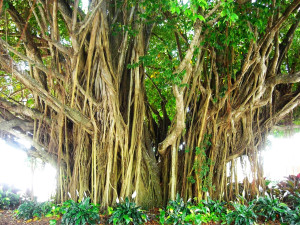Drones to Save the Climate
 Companies are using drones to fight deforestation. One of them, BioCarbon Engineering, based in Oxford, England, aims to plant as many as 1 billion trees per year. It uses drones flying 300 feet over land to map an area’s level of deforestation, topography and soil quality, and report its potential for reforestation. With that information, automated planting drones carrying seed pods then fly just above the ground to fire germinated seeds into the soil. The pods break open upon impact, allowing the seeds to grow.
Companies are using drones to fight deforestation. One of them, BioCarbon Engineering, based in Oxford, England, aims to plant as many as 1 billion trees per year. It uses drones flying 300 feet over land to map an area’s level of deforestation, topography and soil quality, and report its potential for reforestation. With that information, automated planting drones carrying seed pods then fly just above the ground to fire germinated seeds into the soil. The pods break open upon impact, allowing the seeds to grow.
One drone can plant 10 seeds per minute. So two operators controlling multiple drones could plant as many as 36,000 trees in one day. This system is quicker and less expensive than traditional hand-planting approaches. A human who is a good tree planter can plant about 800 trees per day over two acres. Drone software is being perfected to the point where one operator can manage 15 drones at the same time. That speeds up the planting process enormously but also makes planting much less expensive. In addition, the drones can carry 80 to 200 different species to plant.
In the USA alone, 15 million acres of forest are turned into wood products each year. And 300 million acres have been deforested since the 1990s. There, the company DroneSeed is also using drones to plant tree seeds. According to CEO Grant Canary, attacking the problem of increased concentrations of carbon dioxide (CO2) in the atmosphere by planting trees using robotics is the best method “to make reforestation scalable.” Carbon sequestration, the long-term storage of carbon in plants, soils, geologic formations and the ocean, is a chief way to mitigate or defer global warming and avoid climate change. Plants naturally draw carbon dioxide from the air, using it to build their roots, shoots and leaves.
Other projects are taking place across the globe. For years the people around the Irrawaddy River in Myanmar have been working to restore the ecosystem of the delta by planting mangrove trees. Mangroves are particularly good at fighting erosion by stabilizing sediments with their tangled roots, which grow above ground and form dense thickets above and below the waterline. These trees also filter pollutants so maintain water quality and clarity, and provide habitats for fish, invertebrates and other animals. They also form excellent natural barriers that protect shorelines from storm and hurricane winds, waves and floods.
But along the Irrawaddy River that flows from north to south through Myanmar, 75% of the mangroves had disappeared by the 1990s, having been cleared to make space for rice and shrimp farming or to use as wood or fuel. Their loss caused fish stocks to be depleted. To help restore the mangrove forest cover, working with the Worldview International Foundation, BioCarbon Engineering’s drones will plant 100,000 trees per day towards the goal of 1 billion trees in the area and beyond. The local community will be in charge of taking care of the seedlings and young trees that have begun to grow.
These drones and projects will all help to drive down the costs of saving the climate. Replanting millions of acres of trees is a major way to reduce carbon emissions. The replanting is needed also after forest fires and in places where slash-and-burn agriculture has been used. Drones allow that in a cost-effective manner, helping to save the environment.


